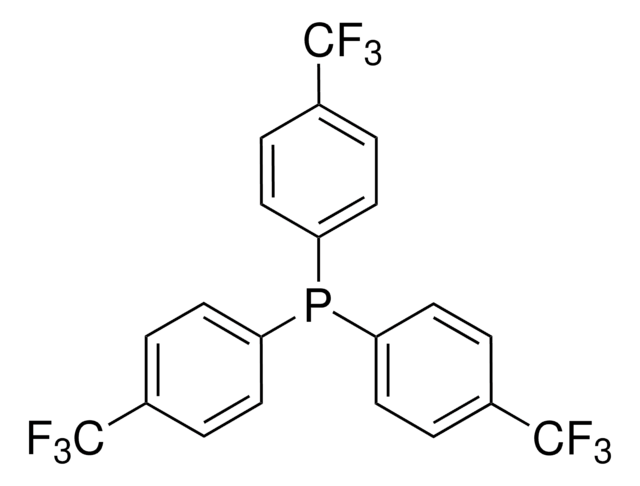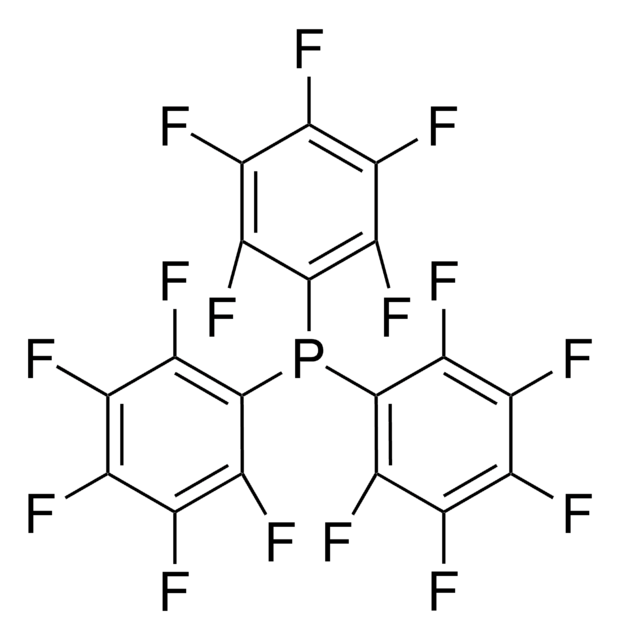393436
Tris(2,6-dimethoxyphenyl)phosphine
98%
Synonyme(s) :
DMPP
About This Item
Produits recommandés
Essai
98%
Forme
powder
Capacité de réaction
reaction type: Buchwald-Hartwig Cross Coupling Reaction
reaction type: Heck Reaction
reaction type: Hiyama Coupling
reaction type: Negishi Coupling
reaction type: Sonogashira Coupling
reaction type: Stille Coupling
reaction type: Suzuki-Miyaura Coupling
Pertinence de la réaction
reagent type: ligand
reaction type: Cross Couplings
Pf
145-147 °C (lit.)
Groupe fonctionnel
phosphine
Chaîne SMILES
COc1cccc(OC)c1P(c2c(OC)cccc2OC)c3c(OC)cccc3OC
InChI
1S/C24H27O6P/c1-25-16-10-7-11-17(26-2)22(16)31(23-18(27-3)12-8-13-19(23)28-4)24-20(29-5)14-9-15-21(24)30-6/h7-15H,1-6H3
Clé InChI
CMLWFCUAXGSMBB-UHFFFAOYSA-N
Application
- Preparation of chiral building blocks via hydroalkynylation reactions or ynolates
- Three-component aza-Morita-Baylis-Hillman reactions (aza-MBH)
- Atom-economic synthesis of nitrogen heterocycles and ynenoates from alkynes
- Oxycylizations of allendiols
- Enantioselective aldol reactions
- Pd-mediated cross-coupling, Pd- and Cu-mediated benzannulation reactions and copper-mediated dimerization reactions
Mention d'avertissement
Warning
Mentions de danger
Conseils de prudence
Classification des risques
Eye Irrit. 2 - Skin Irrit. 2 - STOT SE 3
Organes cibles
Respiratory system
Code de la classe de stockage
11 - Combustible Solids
Classe de danger pour l'eau (WGK)
WGK 3
Point d'éclair (°F)
Not applicable
Point d'éclair (°C)
Not applicable
Équipement de protection individuelle
dust mask type N95 (US), Eyeshields, Gloves
Faites votre choix parmi les versions les plus récentes :
Déjà en possession de ce produit ?
Retrouvez la documentation relative aux produits que vous avez récemment achetés dans la Bibliothèque de documents.
Les clients ont également consulté
Active Filters
Notre équipe de scientifiques dispose d'une expérience dans tous les secteurs de la recherche, notamment en sciences de la vie, science des matériaux, synthèse chimique, chromatographie, analyse et dans de nombreux autres domaines..
Contacter notre Service technique
















